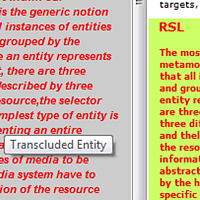A Metamodel and Prototype for Fluid Document Formats

With the transformation of computing from personal computers to the Internet, document formats have also seen some changes over the years. Future document formats are likely going to adapt to the emerging needs of ubiquitous computing, where information processing is embedded in everyday activities and objects. While most existing document formats have originally been a digital emulation of paper documents, over the years they have been enriched with additional digital features. These features were mainly incorporated to take advantage of the new functionality offered by the devices on which the documents are accessed. With the advent of ubiquitous computing, document formats seem to be facing the next evolutionary step. They will have to adapt to novel mobile devices, innovative interaction modalities, the distribution over multiple devices as well as heterogeneous input sources. This adaptation to the age of ubiquitous computing asks for several new document features. We outline a roadmap towards future fluid document representations for ubiquitous information environments. Based on the resource-selector-link (RSL) hypermedia metamodel - a general hypermedia metamodel supporting distribution, user rights management and content adaptation - we developed a metamodel for fluid document formats and the corresponding online text editor for fluid documents.
Publication Reference
Tayeh, A.A.O., Dumas, B. and Signer, B.: "A Metamodel and Prototype for Fluid Cross-Media Document Formats", Proceedings of DChanges 2018, International Workshop on (Document) Changes: Modeling, Detection, Storage and Visualization, Halifax, Canada, August 2018



